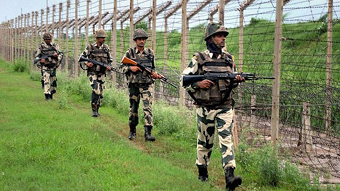A “highly porous” riverine section of the Indo-Bangladesh border in Assam will be put under electronic surveillance in a bid to check illegal immigration and smuggling of arms, ammunition, drugs and cattle. According to an order from the Union Home Ministry (MHA), the “smart fencing” will be operationalised in the 61 km riverine section of the international border in Dhubri district of Assam where the Brahmaputra River enters into Bangladesh.
The project, BOLD-QIT (Border Electronically Dominated QRT Interception Technique), under the Comprehensive Integrated Border Management System (CIBMS), is to be inaugurated by Union Home Minister Rajnath Singh.
It will cover the India-Bangladesh border in the area which consists of ‘char’ (sand islands) and innumerable river channels, which makes border guarding a daunting task, especially during the rainy season, a statement by the MHA said. In January 2018, the information and technology wing of the BSF undertook project BOLD-QIT and completed it in record time with the technical support of various manufacturers and suppliers. BOLD-QIT is a project aimed to install technical systems under the CIBMS, enabling the BSF to equip the Indo-Bangla border in the unfenced riverine area of the Brahmaputra and its tributaries with various kind of sensors.
The BSF is responsible for safeguarding the 4,096-km-long international border with Bangladesh. At various places, it is not possible to erect border fences due to geographical barriers, the statement said. The implementation of this project will not only help the BSF curb all types of cross-border crimes but also provide respite to the troops from round-the-clock human surveillance.








